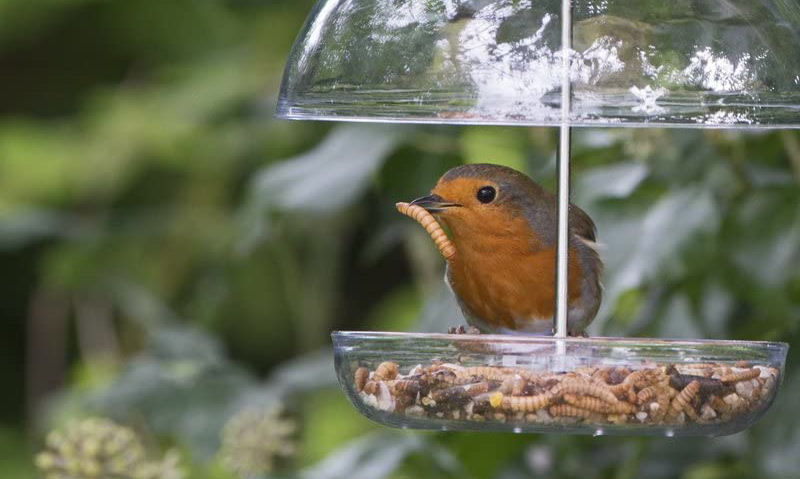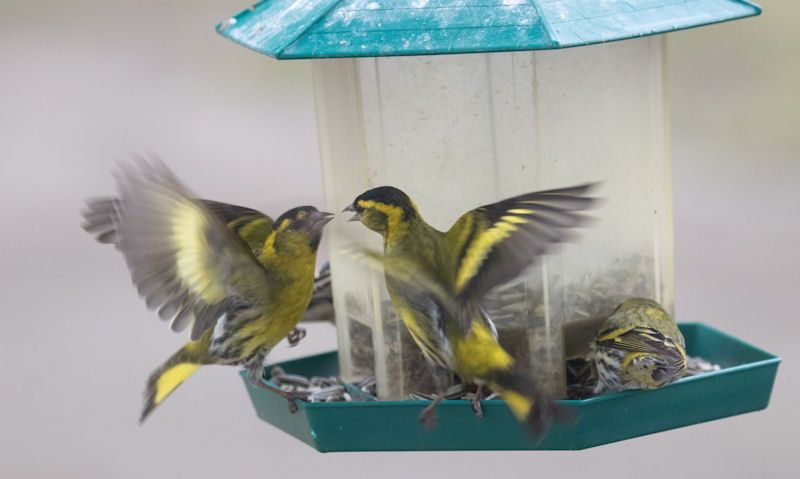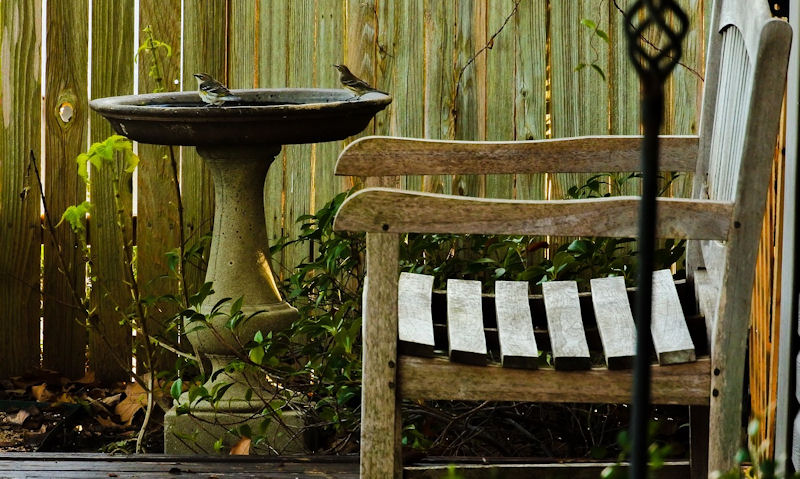Can you put mealworms in a bird feeder
You absolutely can put mealworms into a bird feeder if that is something you want to do, but understand anything other than a specialty feeder can cause issues.
You can put mealworms in a bird feeder that is designed for such use; dried mealworm bird feeders feature a clear plastic tube with a tray fixed to perches. It uses larger port holes to filter feed through but can be hung only. Alternatives is a open tray or use of a mesh nut or seed feeder if worms are chopped up.
To feed dried mealworms to wild birds has huge health benefits, so don't allow the lack of suitable bird feeder hold you back in doing so.
In fact you don't have to put mealworms in a bird feeder at all, when throwing them over the lawn is just as affective, but not so tidy - which is where a mealworm bird feeder comes in useful.
Best bird feeders for mealworms are those that appear to be a seed feeder, but they instead use a larger port hole with a tray to hold access worms.
But that is not to say a simple open plastic or metal mesh tray bird feeder is not just as effective, because it really, is with no fuss at all.
If you must use the peanut or seed intended bird feeder, as a rule of thumb the worms must be chopped up to fit.
How you feed dried mealworms to birds can be without use of feeders, as wild birds who feed off the ground in nature tend to be the ones who feed on them anyway.
Specialty Mealworm Feeder only
To make the most of feeding dried mealworms in a bird feeder to birds, make it a specialty dried mealworm bird feeder as the best solution to your needs.
I would say though in first appearance, a mealworm feeder is similar to a plastic tube seed feeder, with a few differences.
To use a mealworm bird feeder you get a more open port hole for mealworms that are of course larger than seed mixes - but you get the all important feeding tray with wild bird perch attachments.
Benefit to this feature is the ability for wild birds to not only perch near to the port holes where mealworms are accessed, but dried mealworms tend to drop out a little easier.
So if wild birds miss the mealworms in the tube, they can pinch them out of the tray.
Dried mealworm feeders are the hanging kind, so would be sure to cater for Tits, Robins and Thrushes - among many other birds who eat dried mealworms.
Mesh feeders are compatible
If you don't have a specialty hanging mealworm feeder to hand or don't wish to splash out at extra cost, you could get away with using the mesh feeder intended for peanuts.
I have to say you may just have to chop up the mealworms to make them more nut size, but in doing so can reduce the expire day of mealworms in use, so be warned.
Full mealworms are far too big to pull through the open square mesh cage, but to make them smaller can certainly help.
However, rather than use of any kind of bird feeder not intended for use with mealworms, would be the bird seed feeder.
To use either a seed or peanut bird feeder does certainly have its drawbacks.
Mealworms contained within these feeders are sure to be wasted more as they full on the ground. And while ground feeding birds - and those currently feeding - will eat them up, far more will go to waste on the ground regardless.
In using a mealworm bird feeder, at least the tray fixed to the bottom can catch falling worms, while then used as a dish to eat off.
No fuss open tray
Forget about a lengthy clear plastic specialty mealworm bird feeder for a minute, when an open bird feeding tray with dome could be an easiest solution.
What am I saying... the use of this kind of open hanging bird feeding tray is always going to be the best solution to offer feed to wild birds in your garden.
With little restrictions in how they feed, the open tray is accessible to most species, while the dome fixed inches above the tray offers protection from rain.
To shorten the height of the dome can then help deter larger birds or hog the mealworms.
While its perfectly acceptable to add mealworms to these open trays, so to can you add peanuts, seeds or suet of any kind.
What with it being a hanging bird feeder only, its then not only open to as many wild birds who eat mealworms - live or dried up - but the hanging feature is imperative for wild bird safety.
Needed on ground feeders
OK not quite a bird feeder I grant you, but it is possible to feed wild birds dried up mealworms on the ground.
Not all wild birds who eat mealworms can access a confined hanging bird feeder, so to offer up dried mealworms on a ground bird feeder is going to be a bit help.
Not only that, but birds that can access a tight hanging bird feeder are those ground feeding birds also - so there's no leaving out anyone.
Ground feeders are made with a metal mesh tray so there's no build up of water even though they are open to the elements.
If you want to bring as many birds to your garden to feed on more luxury mealworms as possible, then a ground feeder is the answer.
While it does come at expense if you don't have one to hand, there's certainly no harm in using a bowl out of the kitchen - or simply throw mealworms over the lawn.
Dried mealworms only
My solution outlined above is in reference to dried mealworms for wild birds only mind you, never taking into account live mealworms.
And why that is because live mealworms for birds can cause difficulty with use in a hanging bird feeder, but less so an open bird feeding tray - so that's an option at least.
But what with the swirly live mealworms able to make their way through open ports to tight mesh nut feeders - it would just be impossible to contain them.
Of course that is with the exception of the open feeding tray for which there is no escape.
But what you can do with live mealworms to hand is throw them over the lawn, or the patio if that is the only possibility.
What else you can use to hold live mealworms to feed birds is the mesh tray fixed to the bird feeding station, while not forgetting the ground bird feeder.
To summarise
So you can put mealworms in a bird feeder if its the specialty kind; designed with use of mealworms but can be similar to a seed feeder.
Benefits to a hanging dried mealworm bird feeder is it uses larger port holes to filter the mealworms through - plus a tray to catch falling worms.
Mesh bird feeders used to hold peanuts can be used if you chop up the mealworms to fit through the open gaps.
Likewise, a bird seed feeder can be used but the design is without a tray to catch access feed - so more waste is a possibility.
Best solution to feeding mealworms to wild birds in some kind of bird feeder, is with use of a open tray with dome to protect against wet weather.
Similarly, you can use a ground bird feeder that would take on mealworms with no issues, but so too can the mesh tray fixed to most bird feeding stations.
Above outline is in reference to dried mealworms for birds only, so to feed live mealworms would be difficult in a tube or mesh feeder - but an open ground or hanging feeder with dome is possible.


